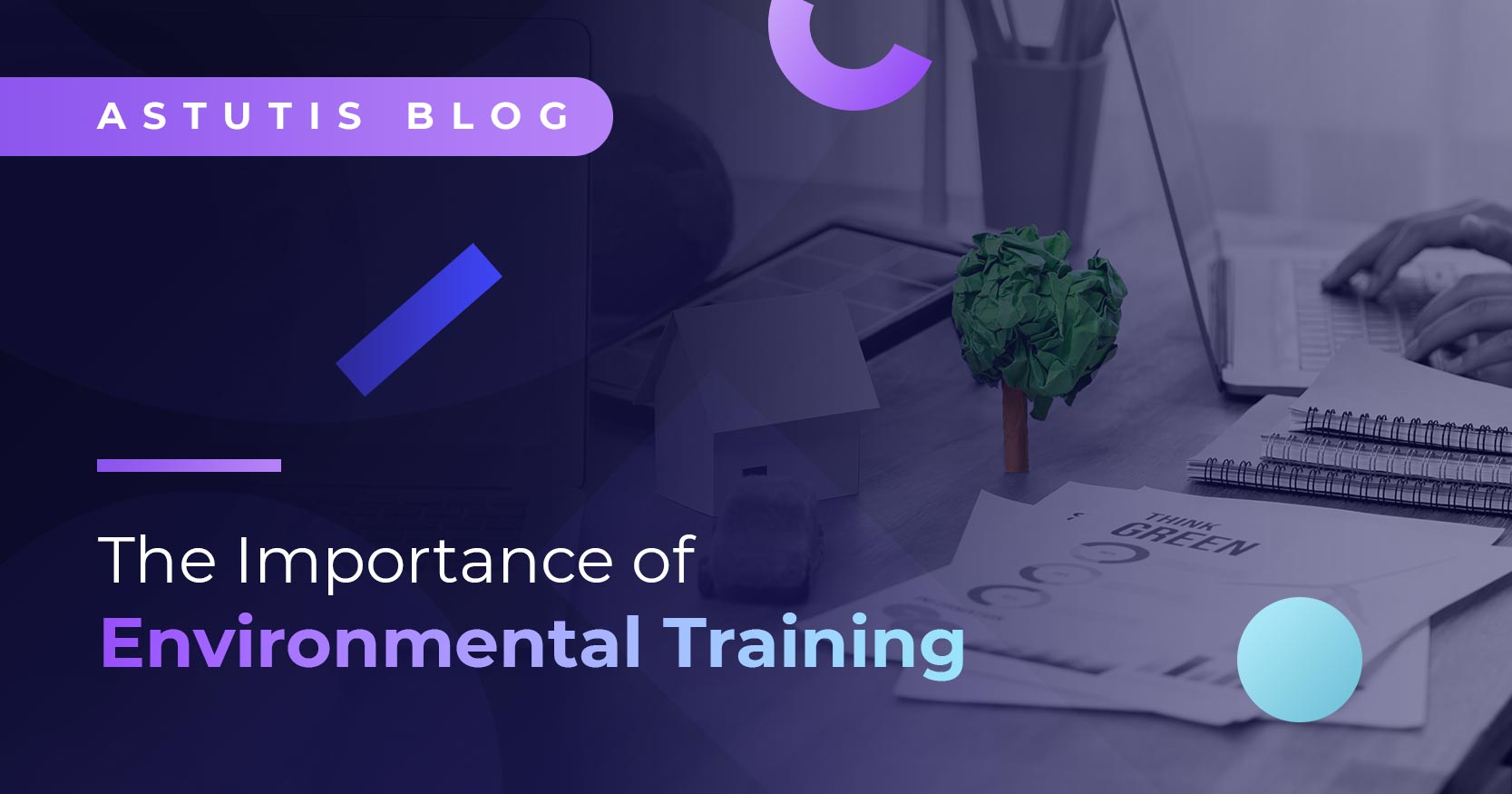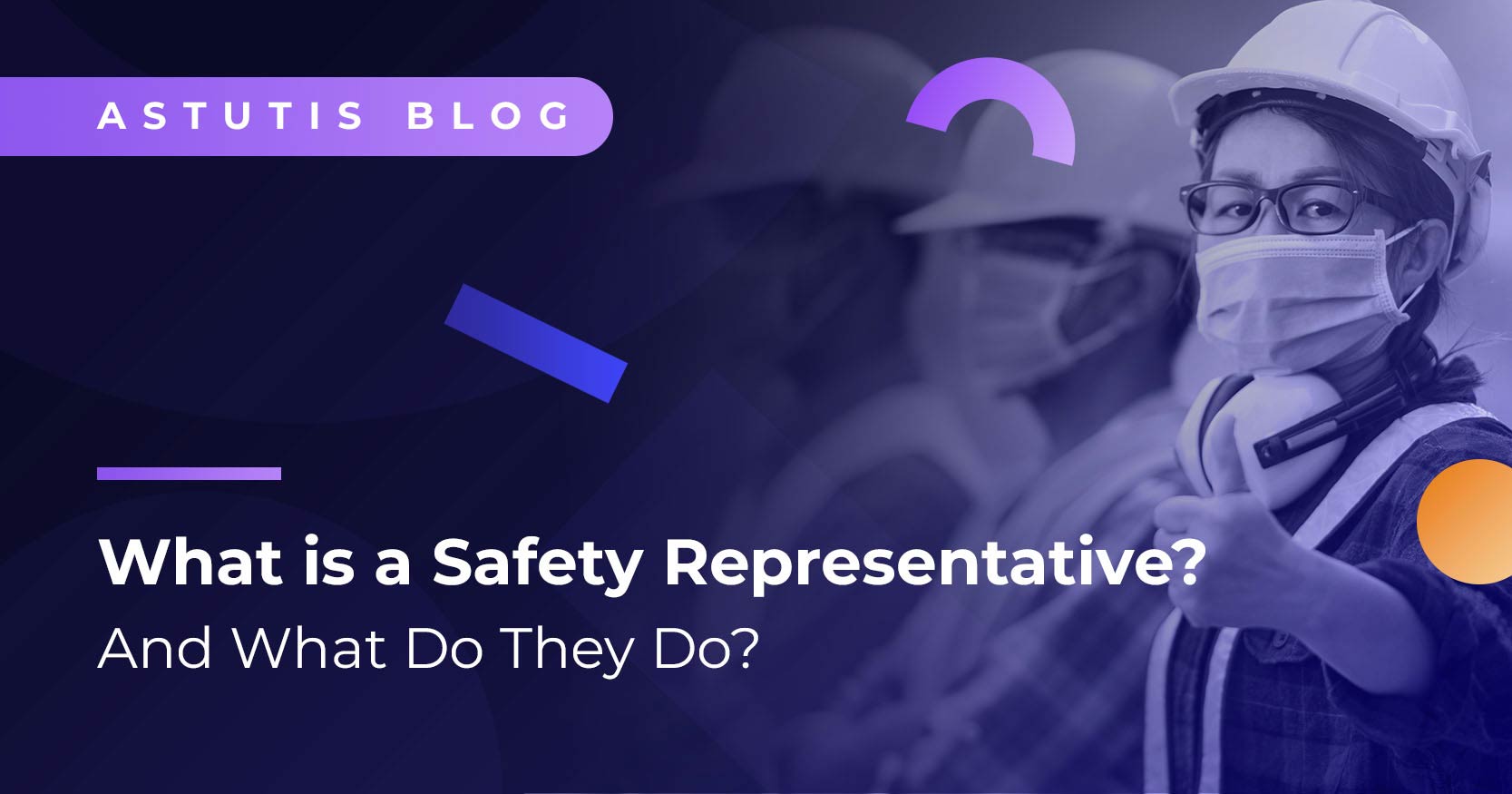The Astutis Guide: How to pass the NEBOSH International General Certificate
The NEBOSH International General Certificate is assessed similarly to its UK-based alternative, the NEBOSH General Certificate.
This blog will analyse the entire assessment process for the NEBOSH International General Certificate and investigate the most beneficial ways to approach both sections of the assessment process. It will go into forensic detail into each stage of the assessment phase, ensuring learners have the best chance of success when studying for the NEBOSH International General Certificate .
How to tackle IG1
The first part of the NEBOSH International General Certificate is the NG1 Open Book Exam (OBEs). NEBOSH stresses that OBEs should not be considered an easier alternative to routine invigilated examinations.
We want to stress it is not an easier option. OBEs ask learners to think critically about what they have learned, discuss them thoroughly, cut off the irrelevant information and apply the appropriate principles. However, there is a more approachable format for learners who have struggled in the past with more standard exams.
The critical and most modern aspect of the NEBOSH International General Certificate is that learners can take the exam in the comfort of their home, wherever and whenever they wish, once their assessment process has begun.
Open Book Exams are structured to give learners as much flexibility as possible. Learners can use resources such as notes, textbooks, learning materials and other online resources to their advantage during the exam window.

Learners will be confronted with several What? Why? How? questions. These are designed to draw out a learner's understanding of core topics explored during the course. Learners should remember not just to describe what they know but how they intend to apply it.
During the exam, learners will be presented with a scenario that describes a realistic workplace and situation. Learners must then carry out a series of tasks using evidence presented in the scenario and the underpinning knowledge they have gained through their studies and revision.
The scenario could contain information that relates to the following:
- Fictional workers, their roles and their individual challenges.
- Conflicting viewpoints and employee disagreements that influence the situation as it unfolds.
- The physical features, surroundings and area of the worksite.
- The actions learners have already taken
- Existing health and safety issues.
The key here is to assimilate what learners need to complete their responses. We strongly recommend learners engage with mock questions and exams as early as possible to acclimatise themselves to the most relevant information.
The questions could be split into different elements such as;
- Element one: Managing workplace health and safety
- Element two: How health and safety management systems work and what they look like
- Element three: Managing risk, understanding people and processes
- Element four: Health and safety monitoring and measuring
These questions draw on separate sections of the course. So if learners attempt to understand which questions refer to specific areas of the course syllabus, they can already have a head start on their exam.
Learners will have 24 hours to complete the exam. NEBOSH suggests it will take learners between four and five hours to complete the questions, so learners should spend the rest of the time researching and drafting their responses.
How to tackle IG2
The NEBOSH International General Certificate concludes its assessment phase with the IG2 marked Risk Assessment. Learners can choose a submission date that suits them.
The Risk Assessment is assessed in the following areas:
- Description of organisation and methodology
- Risk assessment
- Actions and justifications
- Review, communicate and check
Each stage is assessed individually, and learners must pass all stages.
When approaching the IG2 Risk Assessment, we urge learners to take as long as they need to complete their Risk Assessment. NEBOSH recommend learners take three hours to complete all four stages of the Assessment. Ultimately, all learners are different. If a learner is about to begin the NG2 Risk Assessment, we strongly recommend learners take as much time as they need. The critical factor to remember is that learners must submit their final Assessment by the submission date they have registered against.
To begin the Risk Assessment, learners must first choose a workplace to base the Assessment. The Risk Assessment should ideally be carried out based on workplace experience. This will ensure that it is realistic and will benefit the learner and their organisation.
Description of organisation
This is where learners set the scene for their assignment. Learners must give a clear and concise description of their chosen organisation to ensure the examiner understands what the organisation does. Learners can change the name and location (for confidentiality), but everything else should be factual.
Learners cannot forget about the scope of the risk assessment. For example, are learners going to look at the whole organisation or just a specific department or division? For example, if learners work for a large organisation, we recommend concentrating on the part of the organisation or a particular activity or process.
Remember, the NEBOSH examiner will not be familiar with any learner's workplace or industry. Learners should strive to give enough information to judge whether their risk assessment is suitable and sufficient. If learners provide an unclear or incomplete description, this could affect the marking of the risk assessment.
The marking criteria states learners will need to include the following in their description:
- The name of the organisation
- Site location - learners do not need to give the full address, just the general area, for example, Leicestershire.
- How many workers are employed by the organisation?
- A general description of the organisation. This must include products manufactured or services provided and the types of activities undertaken.
- A description of the area is included in the risk assessment.
- Any other relevant information, such as who is responsible for their organisation's health and safety. If learners feel like nothing is suitable, then learners can leave this point out.
Methodology
After learners have given the description, they need to outline how they carried out the risk assessment (methodology used). This allows the NEBOSH examiner to evaluate the reliability and validity of learner assessments.
Learners want to make a case for why they did what they did. Learners should fill in this section after completing the risk assessment, so learners have work to refer to.
For learner methodologies, learners must include:
- The sources of information that they consulted
- Who they spoke to.
- How the hazards and controls were identified, what is already being done, and any additional controls/actions that may be required.
Learners may also include anything else that is relevant to the completion of the risk assessment. This may seem like a small section, but learners will fail if they do not include it.
Stage 2: Risk Assessment
To complete the risk assessment, learners must use the tables in Part two of the assessment pack.
Learners need to find and record at least ten different hazards from at least five different hazard categories. The hazard categories focus on elements 5-11 of the NEBOSH General and International General Certificate syllabus.
- Physical and psychological hazards
- Musculoskeletal health
- Chemical and biological agents
- General workplace issues
- Work equipment
- Fire
- Electricity

It may seem obvious, but learners must include the specified ten hazards from five categories. Many learners fail by ignoring this simple point. If learners only have nine hazards from six hazard categories, eleven from four hazards, or include ten hazards but do not state the hazard category, they will fail.
Learners must include the following details for each hazard to meet the marking criteria:
- The hazard and the hazard category (column 1)
- Who may be harmed and how (column 2)
- What the learner is already doing to control the hazard (column 3)
- What further controls or actions might be needed (column 4) – remember to consider the hierarchy of power and the principles of prevention when deciding on additional controls.
- The timescales for completion of each action (column 5)
- The role of the person responsible for completing each action (column 6)
As learners work through their risk assessment, they will see that column 3 (what they are already doing) and column 4 (further controls needed) work together.
If learners are already doing enough to control the risk, many controls will be listed in column 3 but very few (if any) in column 4. Learners might even note that no further action is necessary.
On the other hand, if learners have very few controls in place, column 3 will contain very little, and column 4 will include a lot more. Both scenarios are acceptable because they are realistic.
Stage 3: Prioritise three actions with justification
Learners must use the table in Part three of the assessment pack to prioritise their actions and justify their selection.
Once learners have identified their hazards, they must pick the three that require the most urgent action. If learners only include two, they will fail.
Learner actions can be associated with the same or different hazard categories. The important thing is that they need to be the learner's highest priorities for action. Learners must also justify why they think these are the highest priority/most urgent actions.
Learner justification must include:
Moral, legal, and financial arguments for ALL actions
Learners must make the case as to why these actions must be addressed. Think about the over-arching legislation, such as the Health and Safety at Work Act, and the prosecution consequences for a learner's organisation and those involved. Then refer to any financial impact such as sick pay, damaged equipment, enforcement actions and prosecution fees.
Learners should not forget to hit home about the moral arguments – protecting workers should be a priority for any organisation. All workers deserve to work in a safe, healthy, and happy environment.
Learners can then move on to each specific action in more detail.
Legal implications for each action
A learner's legal argument for their specific action must reference relevant legislation/standards.
For example, when discussing the control of hazardous substances in the UK, learners should reference relevant duties under the Control of Substances Hazardous to Health Regulations 2002.
Likelihood and severity
Learners need to consider the likelihood AND probable severity (considering current control measures) of injury, ill-health or harm. Learners should consider:
- The types of injury, ill-health, or harm likely to occur
- The number of workers at risk
- How often the activity is carried out, and how widespread the risk is. For example, does the same threat exist in other parts/branches/divisions/sites of the organisation?
Effectiveness of each action
Here, learners should detail how effective each action will likely be in controlling the risk. Learners should describe:
- The intended impact of each action
- Justification for the timescale for completion for each action
- Whether learners think the action will entirely control the risk
Each action should be as impactful as the next. Learners will fail if they spend more time justifying one step and not enough on the other.
Stage 4: Review, communicate and check
Learners must use the tables in Part 4 of the assessment pack to complete the review, communicate and check exercise.
The final part of the assessment is where learners show their ability to communicate their recommendations to the relevant person. To meet the marking criteria, learners must include:
- A realistic review date for the risk assessment and why learners have chosen that review date (50-100 words).
- An indication of how the risk assessment findings are to be communicated (100 to 150 words). Learners should consider whether it will be verbal or written, timeframes, methods (email, notice boards, intranet), and who needs to know the information.
- An indication of how a learner will follow up on the risk assessment to check that the actions have been carried out. (100 to 150 words)
Learners will fail if they miss any of these pointers in their communication review.
Conclusions
Learners will want to remember that NEBOSH has free mock exams on its website at all times. We strongly urge all learners to make the most of them before the examination. This will also help embed how to strategise their responses. Learners can go even further and predict how and when certain course areas will be referred to in their exams.
The IG1 assessment phase can form a distracting and intentionally confusing assessment stage. The key things to remember are;
- Learners will have 24 hours to complete the exam. NEBOSH suggests it will take learners between four and five hours to complete the questions.
- Learners can use resources such as notes, textbooks, learning materials and other online resources to their advantage during the exam window.
- During the exam, learners will be presented with a scenario that describes a realistic workplace and situation. Learners must use their acquired knowledge from the course to address the scenario.
Meanwhile, at first glance, the NG2 marked Risk Assessment can seem a complicated and sometimes convoluted task; however, if learners remember the following tips, they can maximise their chances of success. Learners should;
Always remember the Risk Assessment is marked in four areas.
- Description of organisation and methodology
- Risk Assessment
- Actions and justifications
- Review, communicate and check
- During the Description of organisation and methodology phase, learners will want to briefly but adequately describe their organisation and their preferred methodology.
- For the Risk Assessment phase, learners should look to use tables to categorise risks explored in elements 5-11 of the NEBOSH General and International General Certificate syllabus.
- In the Prioritise three actions with justification phase, learners must strive to justify their actions with the theory gained from the course. They should approach this by addressing the moral, legal, and financial arguments for all actions taken. Next, learners must evaluate the legal implications of each action. Thirdly, learners will want to express the likelihood and severity of the risk. Lastly, learners must explore the effectiveness of each action in detail.
- For the Review, communicate and check phase, learners should look to analyse and communicate their recommendations effectively.
For information about the NEBOSH International General Certificate, take a look at the course page below.
Related Blog

Real Life Stories









